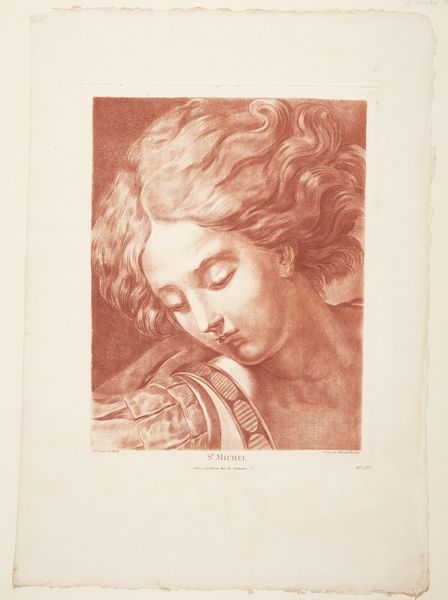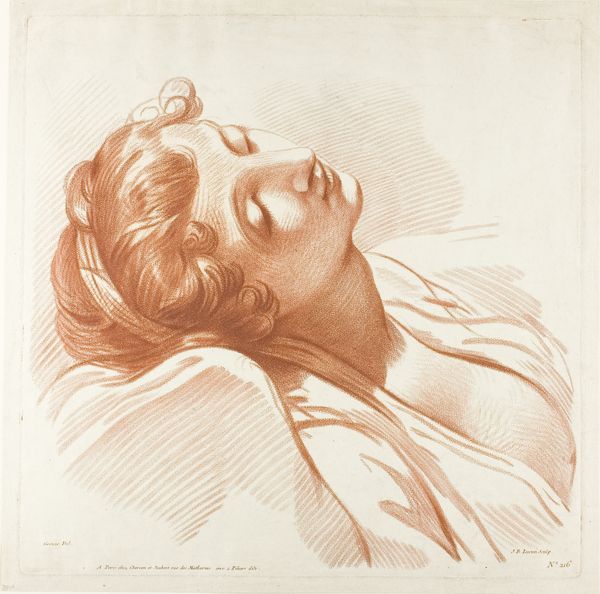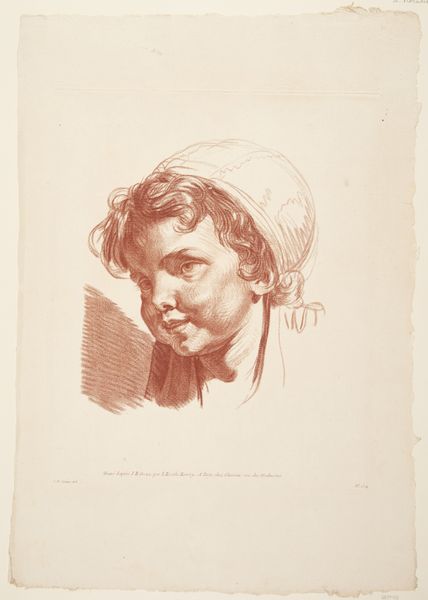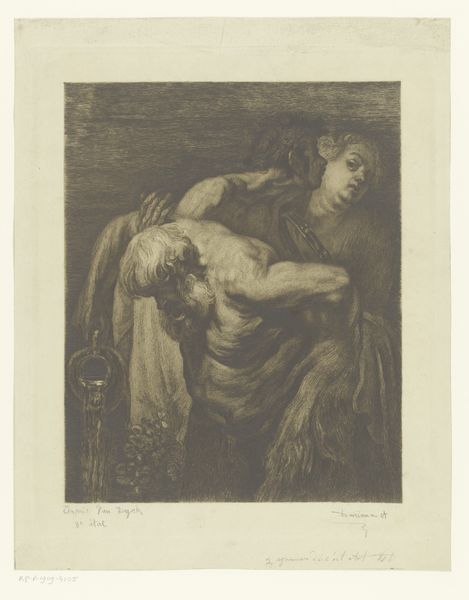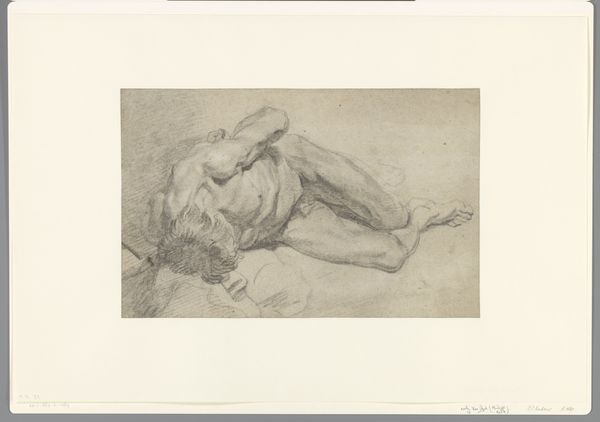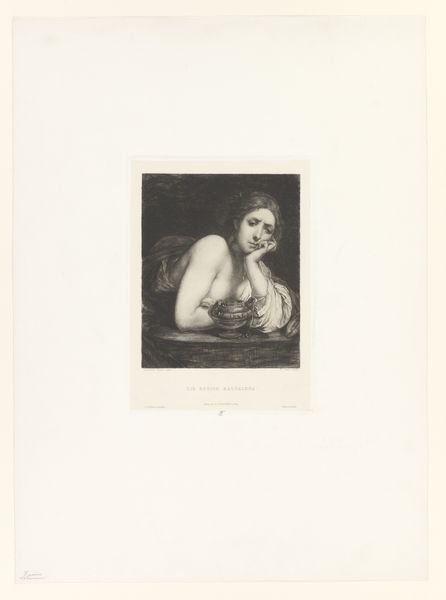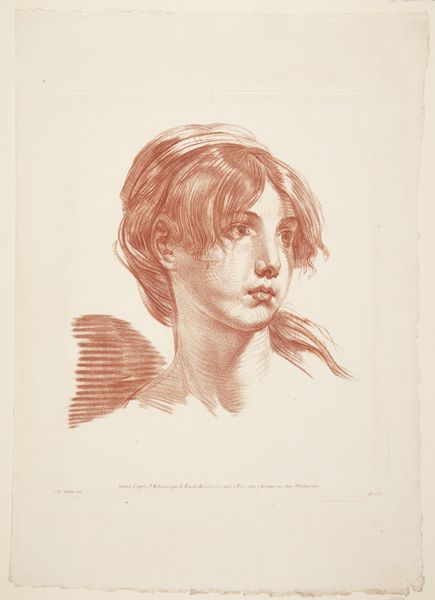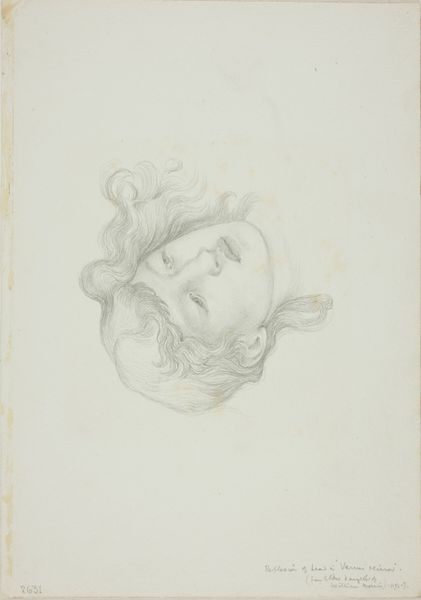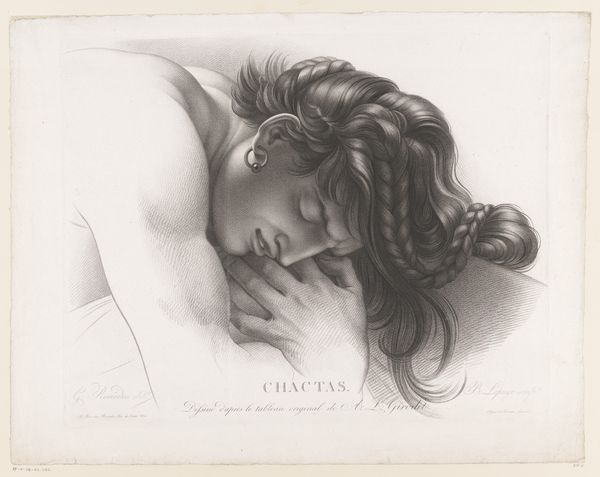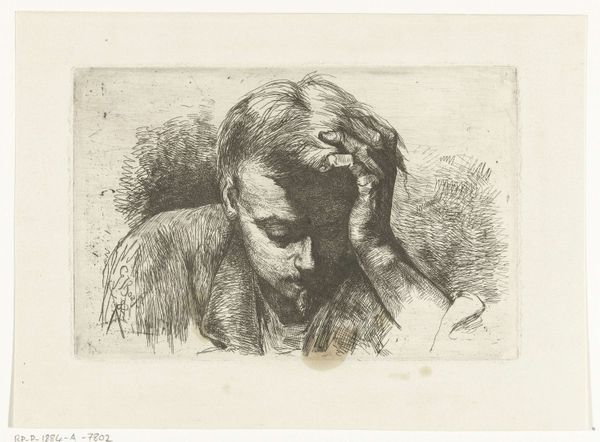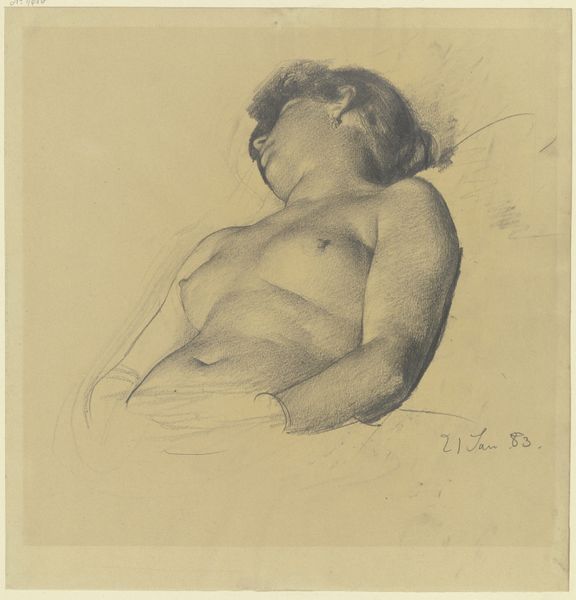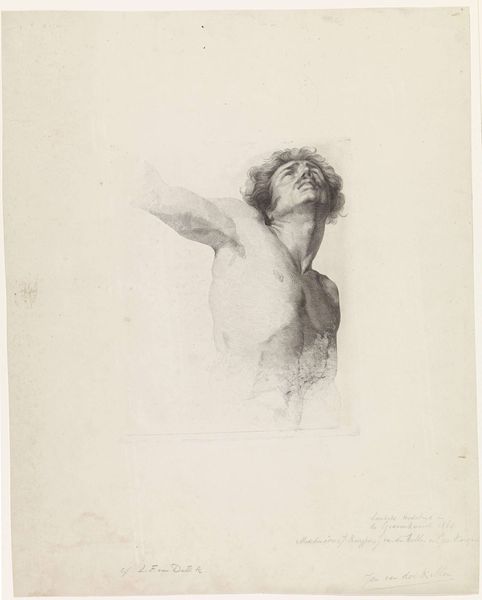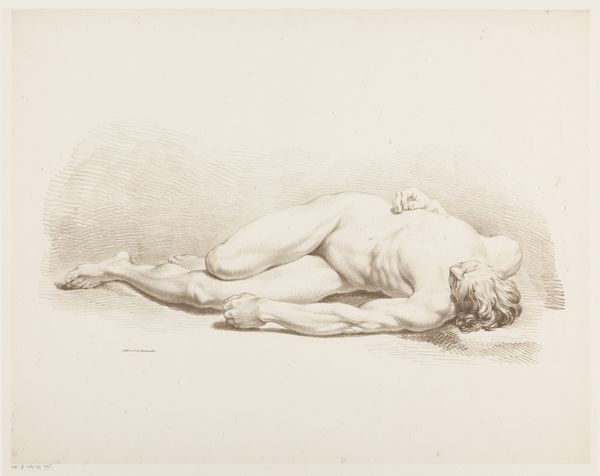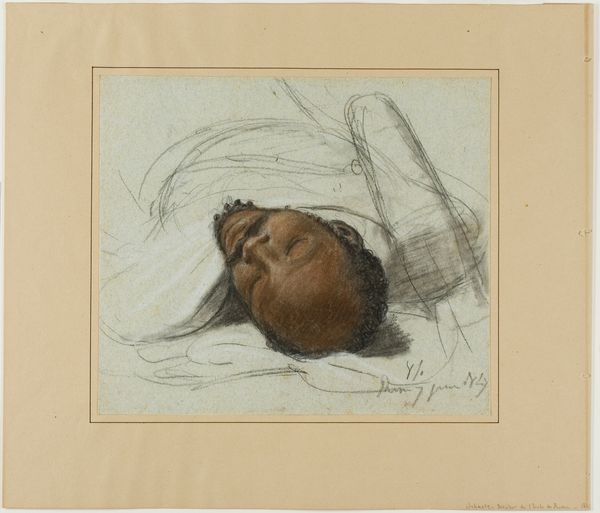
Dimensions: 407 mm (height) x 335 mm (width) (plademål)
Curator: Louise-Rosalie Hémery’s "Den forvirrede pige," or "The Confused Girl," made between 1775 and 1779, arrests me every time. There's a kind of fragile intensity, isn't there? Editor: Absolutely. Immediately, I'm struck by how delicate yet precise the etching is. You can see the traces of labour, the layered hatching built up using printmaking, resulting in this almost hyperreal representation. It makes me wonder about Hémery's role as an etcher within the production. Curator: It whispers volumes, doesn’t it? That's Rococo for you, presenting potent drama within seemingly light confections. The headwear signals domesticity, innocence perhaps, yet the hand presses against her temple, eyes downcast— a world of emotion crammed into a few square inches of paper. Editor: And it is that very 'paper' which carries the weight of Hémery’s production. She’s not merely producing for high art, she's employing the craft and materials to make something immediate, and, dare I say, confrontational within the visual vocabulary of the time. Where did Hémery situate her works in the context of art-making in 18th-century Denmark? Curator: You hit on a key aspect! Hémery's choice of print, with its ability to democratize art through multiples, speaks volumes. We have what feels like a fleeting moment—a psychological portrait rather than a commission of wealth or status. The material shifts the very purpose of the art itself. Editor: Indeed. Even in the application of her skill – notice the subtle yet determined use of sepia ink against the stark, white page; and in those fine, determined strokes there exists not only mastery but accessibility, providing the social and historical value to that scene that would remain locked within wealthy portraits of the period. Curator: It leaves me contemplating what those private confusions were, or might be, across those silent centuries. To make work that makes the viewer feel, no matter when they are seeing it – that is something really special. Editor: Yes, by layering those materials with intimate and confrontational gestures, Hémery encourages her audience to contend with what art could do, as much as what it is representing, it challenges that very premise.
Comments
No comments
Be the first to comment and join the conversation on the ultimate creative platform.
